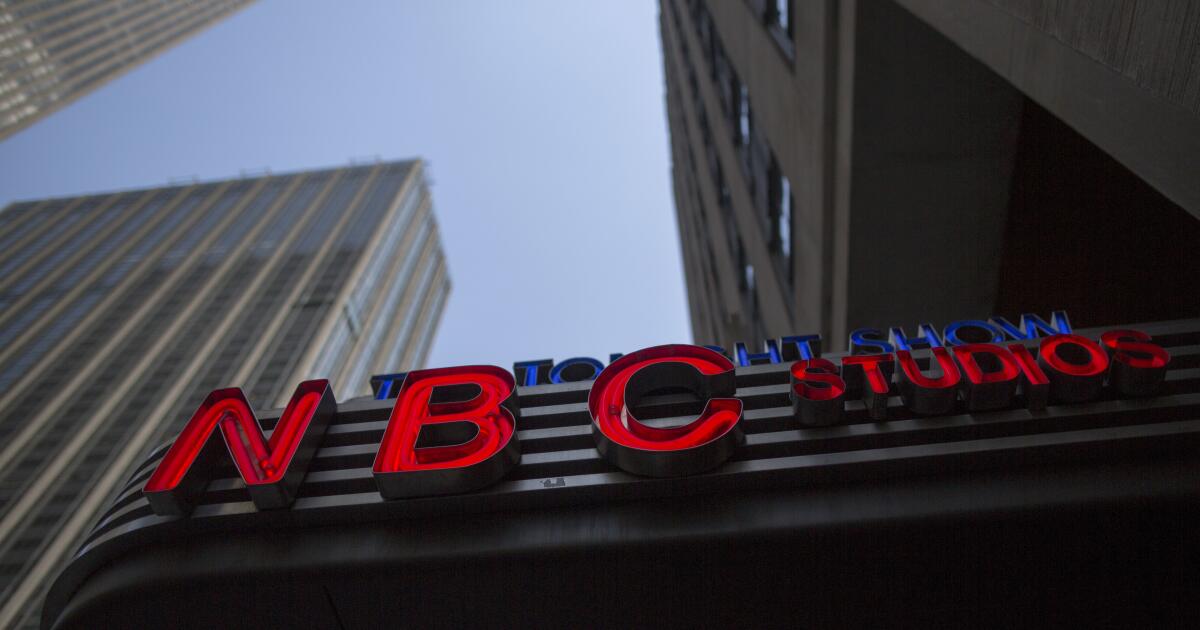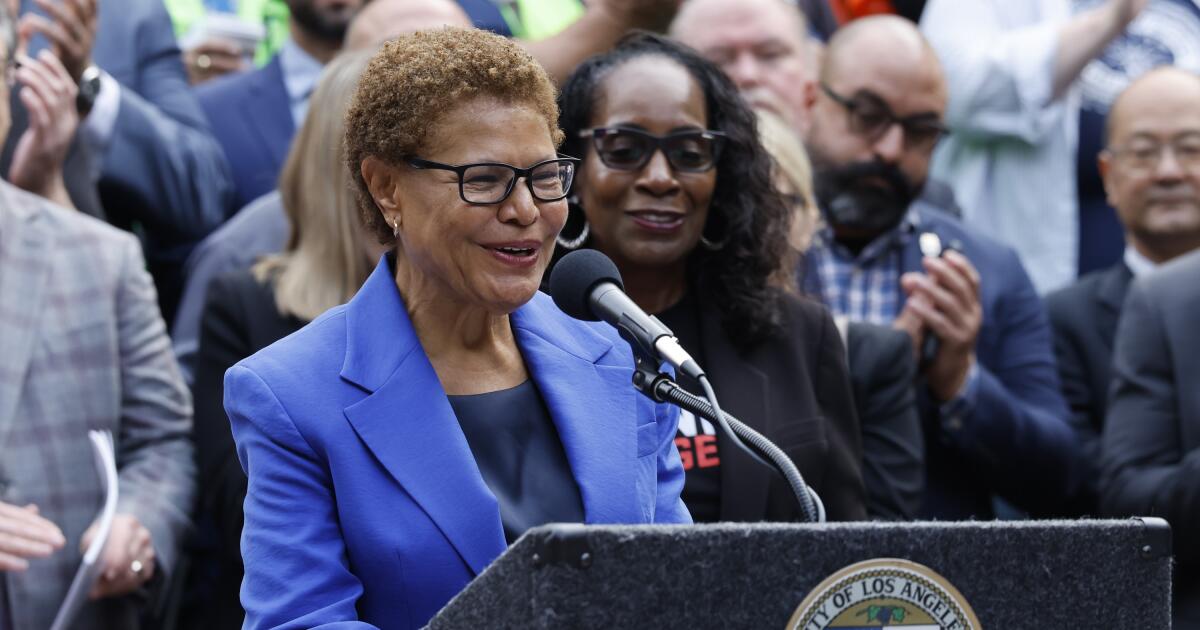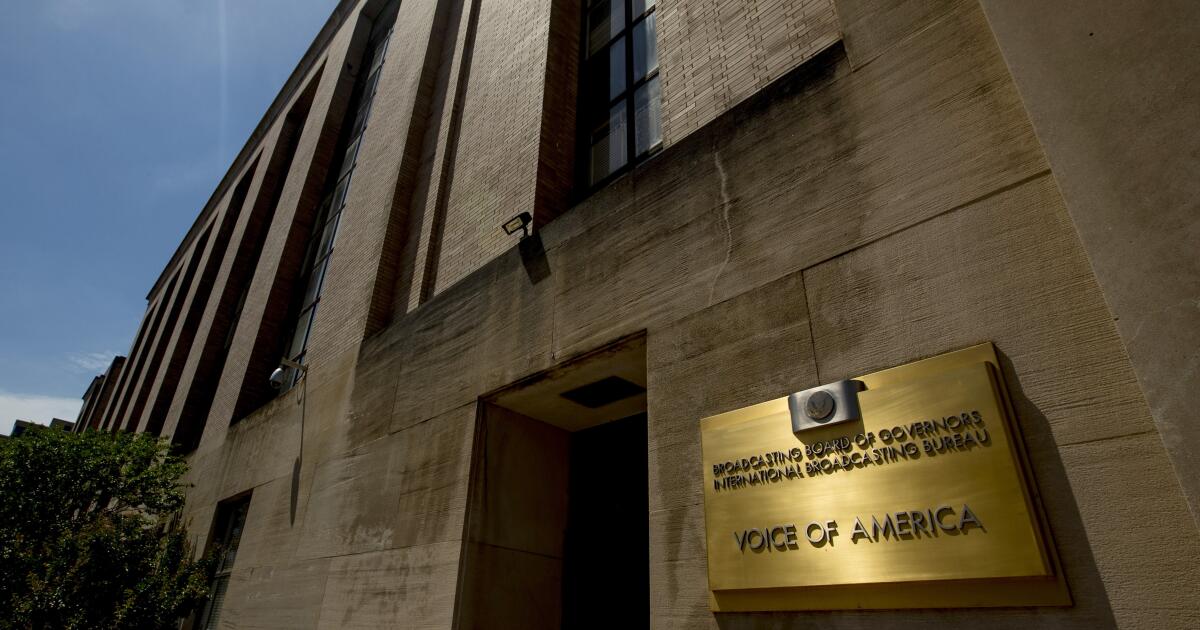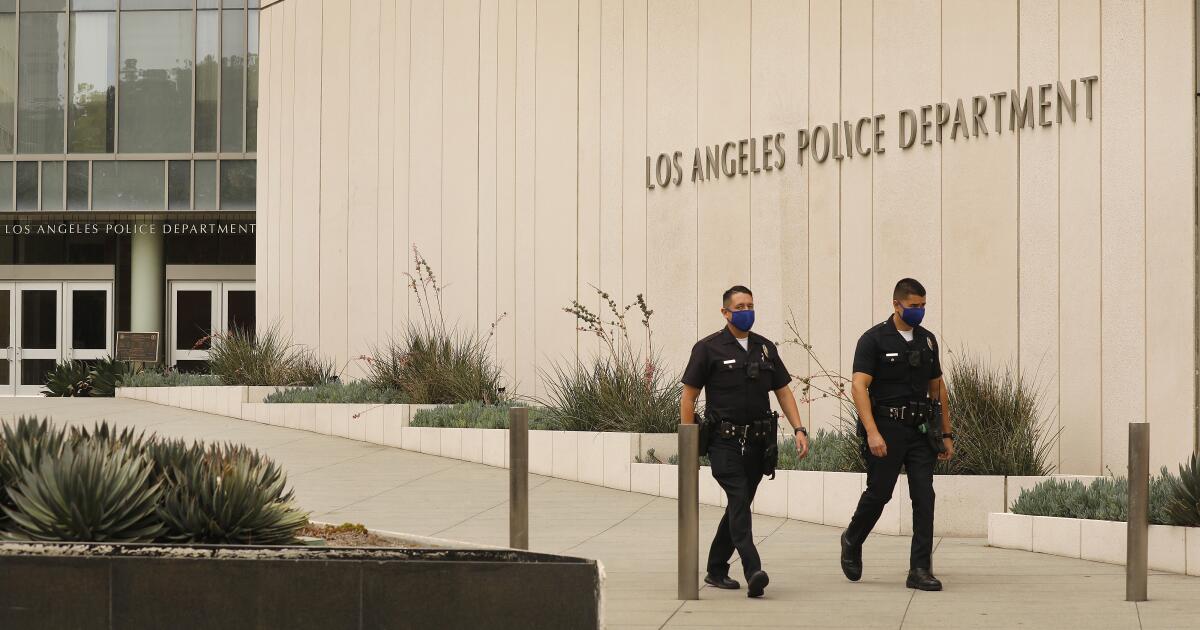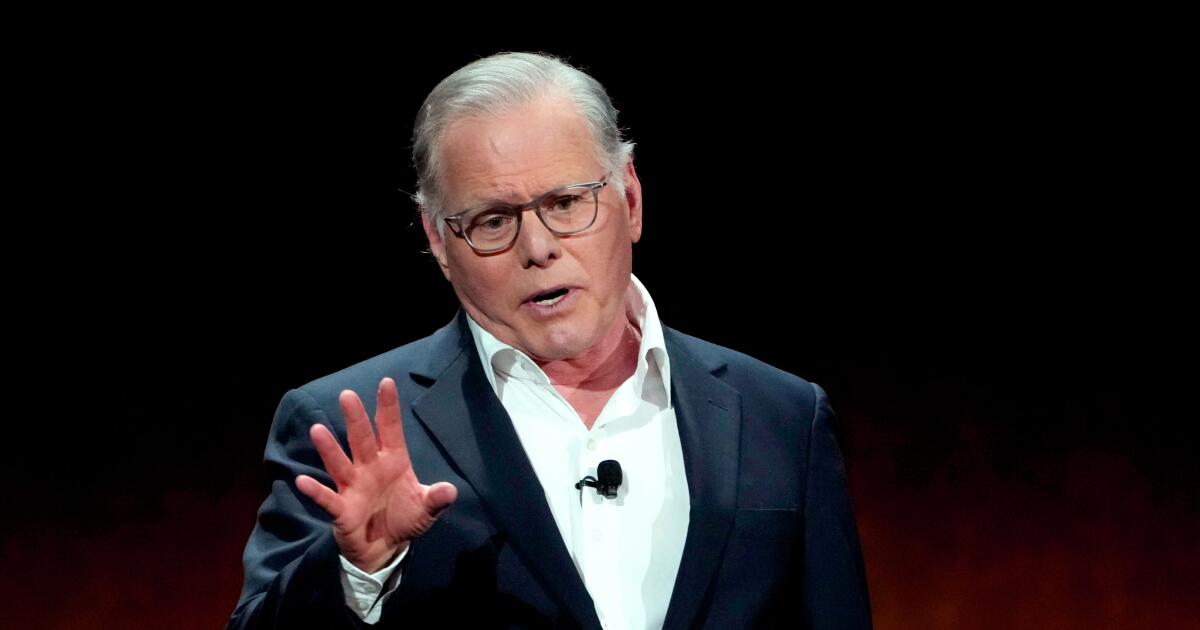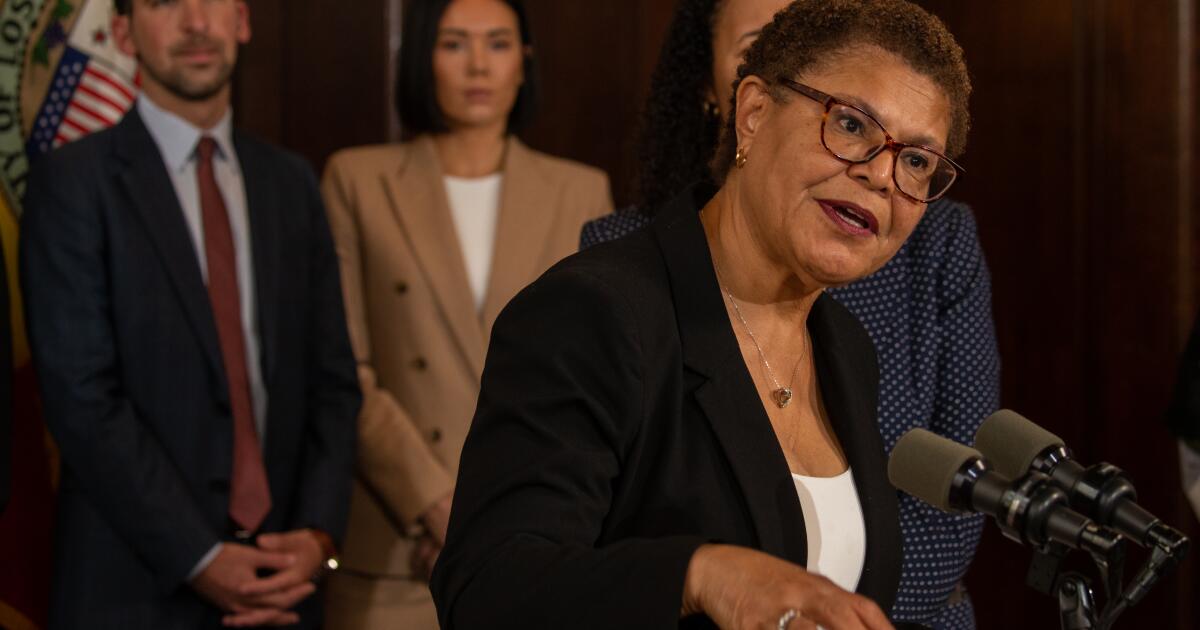1 of 3 | Department of Veterans Affairs Secretary Doug Collins prays with 72-year-old Vietnam-era Army veteran Brenda Sue Jordan at the Lexington, Ky., VA Health Care System’s Bowling Campus in February. Photo by Candace Hull-Simon/Department of Veterans Affairs
WASHINGTON, July 14 (UPI) — Despite an apparent reversal on mass layoffs, the Department of Veterans Affairs is still planning a workforce reduction, prompting legal challenges, staff unrest and warnings from frontline nurses who say the cuts will harm the very veterans the VA is meant to serve.
The VA has signaled it would not move forward with mass layoffs initially envisioned, but recent developments show the agency is still on track to eliminate tens of thousands of jobs by the end of 2025.
Internal contracts and legal challenges suggest broader restructuring efforts are underway, yet the scope and restructuring framework is unclear, raising concerns among lawmakers, unions and frontline workers about their potential impact on veteran care and employee rights.
In a VA press release last week, the agency secretary, Doug Collins said the “VA is headed in the right direction,” thanks to departmental reviews conducted since March.
“A department-wide [reduction in force] is off the table, but that doesn’t mean we’re done improving VA. Our review has resulted in a host of new ideas for better serving veterans that we will continue to pursue,” Collins said.
30,000 employees to be cut
The VA, which employs over 467,000 medical professionals, administrative staff and others, also announced the press release that it’s on track to reduce its workforce by nearly 30,000 employees by the end of fiscal year 2025 through retirements, resignations and attrition.
The department says this voluntary path eliminates the need for a formal reduction in force.
However, that conflicts with a $726,000 contract signed in May by the VA and the U.S. Office of Personnel Management to prepare for a mass layoff. The contract was prepared because the VA said it lacks the internal expertise for such a wide-scale restructuring and requires OPM to supply seasoned human relations specialists to guide layoffs.
Neither the VA nor OPM responded to multiple phone and email requests for comment on the status of the contract. And, so, the VA’s actual plan remains mired in lack of information and confusion for employees, veterans and congressional representatives.
A VA spokesman said Monday that the department is “in the process of winding down that contract with OPM.”
Of the 83,000 VA positions Collins previously set as a goal to cut, according to the department’s latest update, the agency had shed nearly 17,000 positions as of June 1, with another 12,000 departures expected by Sept. 30.
“Nobody in their right mind thinks you can cut 80,000 workers and not cut resources to the veteran,” said Irma Westmoreland, chair of the Veterans Affairs division of National Nurses United, who was reacting to the original plan.
Nurses skeptical
VA nurses on the front lines remain skeptical that reduced staffing can be carried out without affecting patient care, one of their union representatives said. The VA is the largest integrated health care system in the United States, providing services at 1,380 facilities to more than 9.1 million enrolled veterans each year, according to the agency.
“The VA says nurses and doctors won’t be affected, but that just means they’re cutting all the support staff,” Westmoreland said. “That’s still going to impact patient care.”
Westmoreland said the VA has failed to include frontline staff in restructuring discussions, and that the resulting fear and confusion already have caused widespread staffing shortages. That’s because many have decided to retire or switching to another health care system.
The remaining staff is facing burnout by being assigned additional tasks outside of their role to fill the staffing gaps, Westmoreland said.
“People who can retire are retiring. People just hired are leaving. And the rest of us are being stretched thin to do non-nursing work like cleaning, delivering trays, even transporting patients,” she said.
Although the VA plans the staffing cutbacks, the department is requesting $441.3 billion in fiscal year 2026, according to its budget request released in May. Paradoxically, that is a 10% increase from the 2025 fiscal year budget.
Budget approved in House
House Republicans approved a $435.3 billion budget on June 25, but the Senate must prepare its version of the spending plan. The Military Times noted that “the plan is unlikely to pass as its own standalone measure, but instead is expected to be approved sometime this fall as part of an all-of-government spending package.”
The VA said the funding increase, if it happens, would be prioritized toward health care, benefits and national cemeteries.
Much of what is coming has not been shared with Congress, and congressional staffers who work for the House Veterans Affairs Committee say they are in the dark about the agency’s plan.
“VA indicated to the committee in June that they are ‘allowed to do planning, but no execution’ of a reduction in force,” a committee statement said. “They have developed recommendations for an RIF for VA Central Office positions, but that plan has not been signed off on.”
Requests ignored
Staffers also noted that repeated requests for documentation by Democrats on the House Veterans Affairs Committee have been ignored, raising questions of whether veterans will be negatively impacted by the proposed changes.
“We continue to have serious concerns about the effects of VA’s plan because details remain so limited,” said a Democratic staffer who asked that his name not be used because he was not authorized to speak for the committee. “We are conducting an ongoing investigation into VA’s workforce reduction efforts.”
Meanwhile, legal challenges to President Donald Trump‘s March 2025 executive order to mandate sweeping federal workforce reductions had complicated VA’s path forward.
The order was initially blocked by a federal court, but the Supreme Court lifted that injunction Tuesday, allowing agencies like VA to resume planning for workforce cuts while the legality of the order is still under review.
In a separate lawsuit, a federal judge in California issued a preliminary injunction in June against the Trump administration for stripping federal workers of their union rights.
Unions file suit
Six major unions — National Nurses United; American Federation of Government Employees; American Federation of State, County, and Municipal Employees; National Association of Government Employees; National Federation of Federal Employees; and Service Employees International Union — filed that suit.
In a June press release from National Nurses United, the unions argued that Trump’s order violated the First and Fifth amendments by taking away collective bargaining rights without due process from nearly 1 million federal employees. Westmoreland said the case is critical for protecting care quality and the rights of VA staff.
“Collective bargaining rights are critical for union nurses so we can advocate for our veterans and ensure they get the care they deserve,” National Nurses United’s Westmoreland said. “We will fight for our veterans who put their lives on the line for us.”
The court has temporarily stopped the administration from stripping federal workers of their union rights. The injunction is still in place while the lawsuit plays out.
Representing veterans as president of the American Federation of Government Employees Local 2092, Robert Malosh said the administration’s actions have created a culture of fear and uncertainty among staff.
Life-threatening gaps
Malosh, a veteran, recounted the union’s role in addressing life-threatening gaps in emergency care at the main VA hospital in Ann Arbor, Mich.
“For almost 30 years, [certified registered nurse anesthetists] were expected to respond to emergency airway calls from home. We identified that risk and bargained for 24-hour on-site coverage,” he said. “Just last month, a CRNA told me they saved a life. If they weren’t already in the building, that veteran would have died.”
Malosh said that cases like this spotlight the value of unions in identifying blind spots and advocating for both staff and veterans. He described a troubling case involving podiatric surgeries being delayed due to administrative interpretation of care eligibility rules, potentially placing diabetic veterans at risk of amputation or worse.
He also pushed back against a VA back-to-office mandate, calling it a disruptive change that was poorly planned and worsened care delivery.
Back to the office
According to the VA, it announced its back-to-office mandate Feb. 3, ordering all employees, except those with approved arrangements, to work full-time at their assigned duty stations.
The announcement followed Trump’s presidential memorandum Jan. 20 for a back-to-office mandate across all agencies and departments in the executive branch, according to the White House.
Malosh said a number of issues arose with that mandate: For one, employees struggled with Wi-Fi issues due to the influx of people connecting, causing disruptions for telehealth medical appointments.
Also , mental health professionals who had been working privately from home were moved to shared offices and cubicles, causing veterans to feel uncomfortable due to lack of privacy. Malosh said some veterans saw people in the background of a private call.
As the VA moves forward with plans to reduce its workforce, questions remain about the long-term effects on veteran care and employee stability.
With ongoing legal challenges, congressional scrutiny and staff uncertainty, the future of the agency’s restructuring efforts and their consequences for the nation’s largest health care system remain unresolved.
